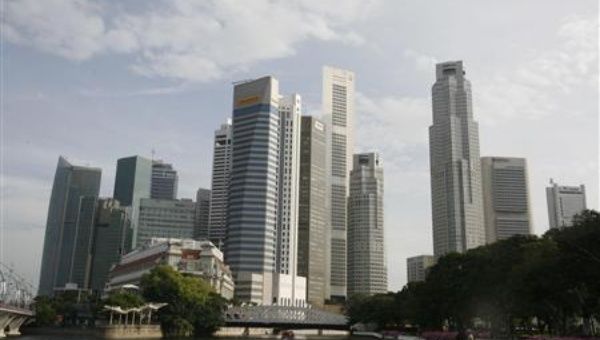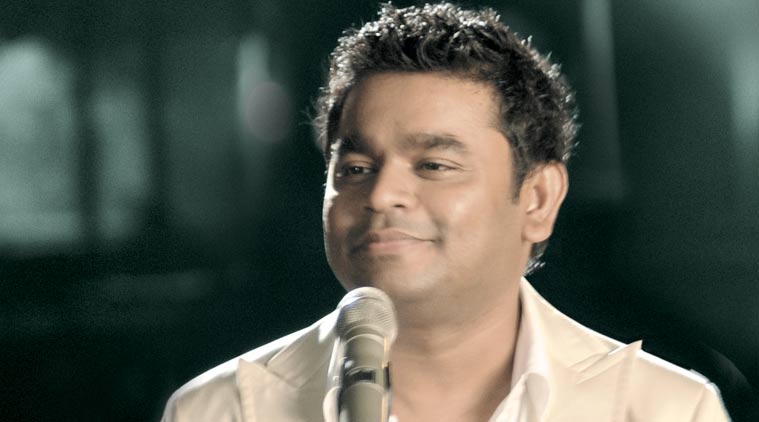Time for Democracy? Brave New Isle after Lee Kuan Yew
By: Walden Bello Singapore's skyline.
REUTERS/ROB DAWSON | Photo: REUTERS/ROB DAWSON
Published 29 April 2015

The problem with any one term to describe Singapore’s political system is that it does not adequately capture all key features of Singapore.
When Burma’s military took its baby steps away from dictatorship four years ago, it seemed that in a region where the merits of authoritarianism and democracy have been hotly debated for decades, democracy had finally gained the upper hand.
Then almost a year ago, the Thai military threw out a democratically elected government, to the wide applause of the country’s middle class, and suddenly, people thought Singapore’s Lee Kuan Yew might have the last word after all.
The West’s Best “Man of the East” Lee, who passed away a few weeks ago at 91, was the most formidable critic of those who advocated liberal democracy for countries in Southeast Asia. Ironically, Lee was also the West’s favorite Asian, the “wise man of the East,” as the Economist put it in its obituary.
For the Americans and the British, this Cambridge don’s fierce anti-communism and friendly reception of their corporations more than compensated for his authoritarian proclivities. Indeed, western investors had a privileged status under Lee, who championed a development model pushed by an alliance between foreign transnationals and the Singaporean state, with local businesses playing a subordinate, marginal role.
Interestingly enough, when China’s communists began their march towards capitalism, they saw in Lee’s combination of controlled politics and capitalist economics a model in miniature of their vision for their society. Rather than authoritarian, some suggested that a more apt term for Lee’s project was “totalitarian,” given his justification of government’s imperial reach into the private sphere.
As he put it in a 1987 National Day rally, ““I am often accused of interfering in the private lives of citizens. Yes, if I had not done so, had I not done that, we wouldn’t be here today, we would not have made economic progress, if we had not intervened on very personal matters—who your neighbor is, how you live, the noise you make, how you spit…or what language you use. We decide what is right. Never mind what people think. That’s another problem.”
Reform cum Domination Others have wondered whether “fascist” might not be a better term for a hegemonic state that, according to the sociologist Manuel Castells, had mastered a process of promoting “social reform, social organization, and social control, to actually achieve at the same time political legitimation and political domination.”
For instance, Singapore’s public housing program is extolled as one of the most successful in the world, with over 80 per cent of the population housed in government-financed flats, about 75 per cent of which are owner-occupied. In the process, however, the slums and lower class communities that had provided the base of lower-class and ethnic resistance to Lee’s People’s Action Party (PAP) were disaggregated and reconstituted into artificial highrise communities designed to facilitate technocratic and police control.
The problem with any one term is that it does not adequately capture all key features of Singapore’s style of governance. For instance, elections are unquestionably free, but gerrymandering and other intricate electoral rules that favor PAP constituencies ensured, for instance, that with only 60 per cent of the total vote, the party won 90 per cent of the seats in parliament in 2011.
The House that Lee Built Lee was no stranger to repression. After all, he once said that “repression is like making love. It’s easier the second time around.” In recent years, however, repression has no longer your typical heavy-handed variety of arbitrarily detaining or torturing political opponents. Everything is done under the “rule of law.”
Critics are allowed to voice their criticisms, but once they cross a certain point, they find themselves facing charges of infringing tax, libel, anti-corruption, or business laws. A prominent academic who showed signs of becoming a major opponent of the People’s Action Party was subjected to character assassination and discredited when the government presented evidence that he had used university funds to mail his wife’s PhD thesis to her university in the U.S.
Far more effective in taming the country’s middle class Chinese population, the PAP has found, is the threat of closing off the path of career advancement should they not toe the line. Government initiatives often carry the prospect of reward and a hint of threat. Thus prominent businessmen and professionals are often requested to run for office as PAP representatives.
This is often presented as an honor, and is usually received as such. However, those who are approached also know it an honor they can’t refuse since refusal would mean seeking to establish some distance from the government, something that would arouse suspicion of harboring private doubts or resentments in the totalitarian PAP.
Indeed, the PAP has mastered the art of cooptation, and its success at this is often advanced as the reason Singapore does not need a two party system or a real opposition. As former Prime Minister Goh Chok Tong put it in a remarkably frank speech at the Fletcher International School of Diplomacy in 1985:
Imagine the fate of the country if the outcome of every election were a cliff-hanger. Picture to yourself the frenzied supporters, the jostling for power, the excitement, the uncertainty, the catastrophe.
In Singapore, we have not worked a two-party system. Many people believe that such a two-party system, with two parties of equal but opposing strength, is a necessary feature of democracy…Unlike in the United States, our political talent pool is just too small for us to share equally between the two parties. Better for us to concentrate our limited talents in the main party and have it represent the broad majority of the population. It does not make sense to keep half of our best people in opposition all the time. That is why we regularly comb the length and breadth of the country for suitable candidates to stand on the governing party ticket.
We even coopt those who disagree with us on certain policies, provided they share our core values. Many Singaporeans resent a system that denies genuine democratic competition. As one of them told a newspaper reporter, “People just get tired of living in the sixth form [12th grade in the US system] the whole of their lives.”
Instead of challenging what they see as a formidable system, however, they have preferred to vote with their feet and emigrate, along with those in search of better economic and professional conditions. The city-state of 5.3 million has one of the highest emigration rates in the world, and over half of teenagers surveyed responded that they would move abroad if they had the chance.
These are worrying demographics. No wonder Lee reserved some of his worst epithets for emigrants, whom he called “washouts.” A Fraying Social Contract Still the PAP feels that what it views as its “social contract” with the population—we, the PAP, give you security, prosperity, and clean government in exchange for your tolerating our being your rulers in perpetuity—remains intact.
But of these three commodities, it seems that the PAP can now only unambiguously deliver on one, that of providing physical security. According to the Ministry of Manpower, the real incomes for the bottom 20% of Singaporeans barely increased over the period 2001-2010 while median real incomes rose by only 1.2% per annum.
As for Singapore’s famous corruption-free political culture, it has been severely dented by several high-profile corruption scandals, including what the Straits Times describes as “a sex-for-contracts case of a top officer in the civil defense force and the misappropriation of funds by a head of a branch of the Corrupt Practices Investigation Bureau.”
This has led to the city state’s being downgraded in Transparency International’s ranking of the world’s least corrupt societies and contributed to the perception of 38 per cent of Singaporeans that corruption has increased. Time for Reform Even as many in Southeast Asia wonder whether Lee might have had the last word on the region’s political future, the question that is on the mind of many Singaporeans, in contrast, is not if but when his legacy of totalitarian social engineering will follow the “Old Man.”
Lee Kuan Yew always reminded his successors that he was ready to take back the reins of power if ever they strayed from the path he had charted. With him no longer peering over their shoulders, will the current generation of PAP leaders have the courage to bring about what many of them already realize as the key to the renewal of Singapore: the genuine democratization of politics? Telesur columnist Walden Bello researched the “Singapore model” for his book Dragons in Distress: Asia’s Miracle Economies in Crisis (New York: Penguin, 1991)
This content was originally published by teleSUR at the following address:
http://www.telesurtv.net/english/opinion/Time-for-Democracy-Brave-New-Isle-after-Lee-Kuan-Yew-20150429-0018.html. If you intend to use it, please cite the source and provide a link to the original article. www.teleSURtv.net/english



 Dressed in a grey suit and seated in the green room of Stein auditorium at India Habitat Centre, Rahman is playing with his iPhone 6 when we find him.
Dressed in a grey suit and seated in the green room of Stein auditorium at India Habitat Centre, Rahman is playing with his iPhone 6 when we find him.